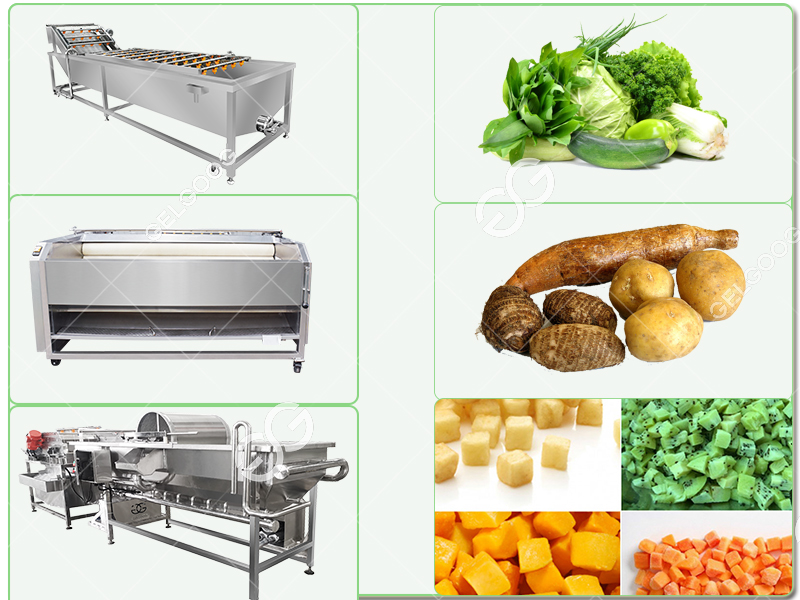Vegetables grow in the soil, and to ensure the quality and lush growth of the vegetables, the vegetable growers apply fertilizers to the vegetables. Therefore, freshly picked vegetables will have a lot of soil as well as pesticides and chemicals. Therefore, we must wash vegetables when we eat them. Now, many packaged vegetables in supermarkets are pretreated, and the vegetables are cleaned by a leafy vegetable washing machine instead of manual cleaning, and then packaged and sold. The air bubbles generated by the vegetable washing machine can replace the artificial, clean and rub the vegetable memory, and remove the dirt and impurities on the surface of the vegetable. And it also increases the sales value of vegetables and increases the income of vegetable growers.
When it comes to cleaning vegetables, many people will have a scene in their minds, a row of workers wearing water shoes and leather aprons, standing on both sides of the pool to carry out repeated cleaning operations, the water in the faucet has been flowing. The factory building is full of water and a sight of a lot of people.
In the past, when machinery was less advanced, the prevalent method for vegetable processing was labor-intensive and time-consuming, resulting in low output. To address the challenges associated with manual labor and low productivity, many food machinery manufacturers invested in research and development. Their efforts yielded a fully automated, multi-functional vegetable washing machine capable of efficiently cleaning various vegetables, including leafy greens and root vegetables. This technological advancement signifies a significant milestone for businesses, as it enables them to transition away from manual labor for certain tasks. The utilization of these machines not only boosts production but also enhances profits, effectively addressing labor shortages.

What types of vegetable washing machines are there?
The bubble cleaning machine is suitable for a wide range of raw materials. It is cleaned in a bubble water bath. It is suitable for the cleaning of strawberries, jujubes, potatoes, vegetables, fruits, etc. It can work continuously and can be customized according to the output of the product. The cleaning machine has a relatively high degree of automation, the cleaning speed is controlled by a frequency converter, and the cleaning speed can be adjusted freely. It is suitable for cleaning operations of various vegetable processing enterprises, aquatic product processing enterprises and meat processing enterprises.
The eddy current cleaning machine consists of two parts: the cleaning machine and the vibration draining water. The machine is mainly used for cleaning and vibration draining after vegetable cutting. With the cooperation of the machine, the residue is automatically discharged, and the cleaned material is drained and output through the vibrating screen. This machine is especially suitable for vegetable processing enterprises and clean vegetable distribution centers in major central kitchens, canteens and supermarkets.
The brush cleaning machine is a more targeted cleaning of raw materials, suitable for cleaning or peeling various root fruits and vegetables. For cleaning or peeling, choose a soft-bristled or hard-bristled brush according to the actual needs of the user. The soft brush is specially used to clean the sediment and impurities on the surface of the material, and the hard brush is specially used for peeling. Such as: potatoes, sweet potatoes, taro, radishes, potatoes, purple potatoes, mustard, Jerusalem artichoke, ginger, dried dates, clams, etc. are all suitable for this washing machine. Its working principle is to use the rotation of the hair roller and the friction between the materials to remove the soil and impurities attached to the cleaned objects.
We are a manufacturer of vegetable processing equipment. If you want to start a vegetable processing business, you can contact us, and we will provide specific equipment and solutions according to your needs.
